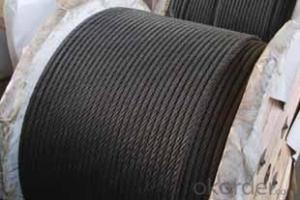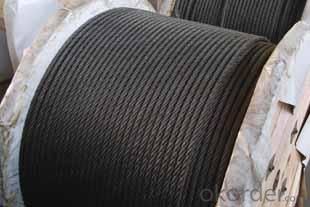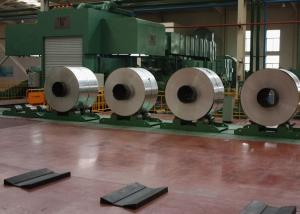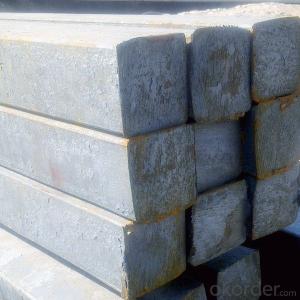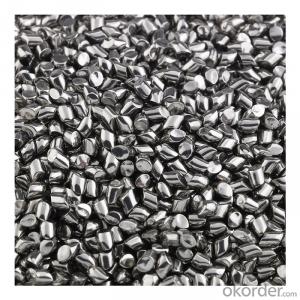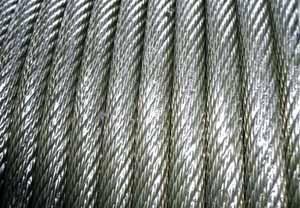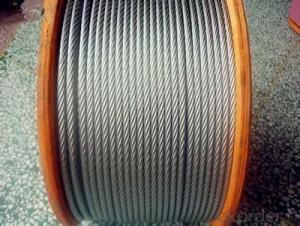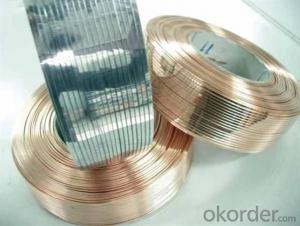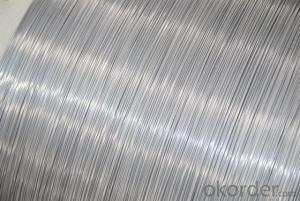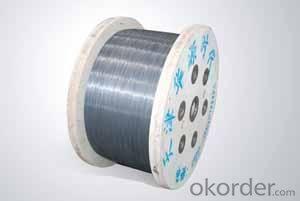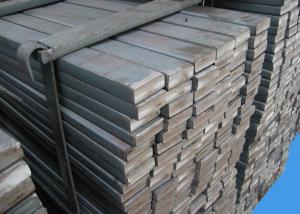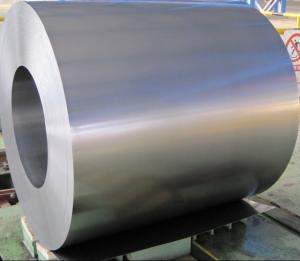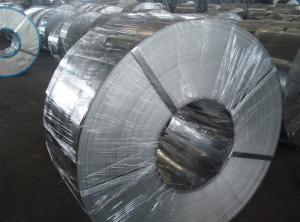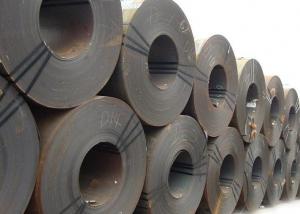STEEL WIRE ROPE FOR ELEVATOR
- Loading Port:
- China Main Port
- Payment Terms:
- TT OR LC
- Min Order Qty:
- -
- Supply Capability:
- -
OKorder Service Pledge
OKorder Financial Service
You Might Also Like
Standard:GB/T 8903-2005 standard
APPLICATION: Lifting, Hoisting

size | weight | tensile | ||||||||||
1570 | 1670 | 1770 | 1870 | 1960 | ||||||||
mm | Kg/100m | Break Min. | ||||||||||
FIBER | STEEL | FIBER | STEEL | FIBER | STEEL | FIBER | STEEL | FIBER | STEEL | FIBER | STEEL | |
6 | 13.3 | 14.6 | 18.6 | 20.1 | 19.8 | 21.4 | 21.0 | 22.7 | 22.2 | 24.0 | 23.3 | 25.1 |
7 | 18.1 | 19.9 | 25.4 | 27.4 | 27.0 | 29.1 | 28.6 | 30.9 | 30.2 | 32.6 | 31.7 | 34.2 |
8 | 23.6 | 25.9 | 33.1 | 35.7 | 35.2 | 38.0 | 37.3 | 40.3 | 39.4 | 42.6 | 41.4 | 44.6 |
9 | 29.9 | 32.8 | 41.9 | 45.2 | 44.6 | 48.0 | 47.3 | 51.0 | 49.9 | 53.9 | 52.4 | 56.5 |
10 | 36.9 | 40.5 | 51.8 | 55.8 | 55.1 | 59.4 | 58.4 | 63.0 | 61.7 | 66.5 | 64.7 | 69.8 |
11 | 44.6 | 49.1 | 62.6 | 67.6 | 66.6 | 71.9 | 70.6 | 76.2 | 74.6 | 80.5 | 78.3 | 84.4 |
12 | 53.1 | 58.4 | 74.6 | 80.4 | 79.3 | 85.6 | 84.1 | 90.7 | 88.6 | 95.8 | 93.1 | 100 |
13 | 62.3 | 68.5 | 87.5 | 94.4 | 93.1 | 100 | 98.7 | 106 | 104 | 112 | 109 | 118 |
14 | 72.2 | 79.5 | 101 | 109 | 108 | 116 | 114 | 123 | 120 | 130 | 127 | 137 |
16 | 94.4 | 104 | 132 | 143 | 141 | 152 | 149 | 161 | 157 | 170 | 166 | 179 |
18 | 119 | 131 | 167 | 181 | 178 | 192 | 189 | 204 | 199 | 215 | 210 | 226 |
- Q: How is steel wire rope used in elevators?
- Steel wire rope is used in elevators to provide the necessary strength and support for lifting heavy loads. It is typically used as the main hoisting cable, ensuring smooth and safe vertical movement of the elevator car. The steel wire rope is highly durable and can withstand the constant stress and tension experienced during elevator operation, making it an essential component in ensuring the reliability and safety of elevators.
- Q: What are the different types of steel beams and their uses?
- There are several types of steel beams used in construction, including I-beams, H-beams, and T-beams. I-beams are commonly used for structural support in buildings and bridges, as they have a high strength-to-weight ratio. H-beams, also known as wide flange beams, are used for heavy loads and long spans due to their wider flange and higher load-bearing capacity. T-beams are used in reinforced concrete construction, where the top flange of the beam is embedded in the concrete to provide additional strength. These different types of steel beams offer versatility in various construction applications.
- Q: What are the different types of steel tanks and containers available?
- There are various types of steel tanks and containers available, including welded steel tanks, bolted steel tanks, stainless steel tanks, and corrugated steel containers. Each type has its own unique features and applications, ranging from water storage tanks to chemical storage containers and industrial bulk storage tanks.
- Q: How are steel products used in the chemical industry?
- Steel products are widely used in the chemical industry for various applications such as storage tanks, pipes, and equipment due to their high strength, durability, and resistance to corrosion. These steel products help store and transport chemicals safely and efficiently, ensuring the integrity of the substances being handled. Additionally, steel is often used in the construction of chemical plants and refineries, providing a stable and secure infrastructure for chemical processes.
- Q: What are the properties of galvanized steel?
- Galvanized steel is a type of steel that has been coated with a layer of zinc, which provides several properties. It offers enhanced corrosion resistance, as the zinc layer acts as a barrier against rust and other forms of degradation. Additionally, galvanized steel has superior durability and longevity due to its protective zinc coating. This type of steel is also known for its high strength and excellent formability, making it suitable for various applications in construction, automotive, and manufacturing industries. Furthermore, galvanized steel is relatively low-maintenance and requires minimal upkeep.
- Q: What are the environmental impacts of producing steel products?
- The environmental impacts of producing steel products include emissions of greenhouse gases, such as carbon dioxide, during the iron and steel production process. Steel production also generates air pollutants, including sulfur dioxide, nitrogen oxide, and particulate matter. Additionally, the extraction of raw materials for steel production can lead to habitat destruction and deforestation. The steel industry also consumes large amounts of water and energy, contributing to resource depletion and potential water and air pollution. Overall, the production of steel products has significant environmental consequences that require sustainable practices and mitigation measures.
- Q: What are the different types of steel storage tanks?
- The different types of steel storage tanks include welded steel tanks, bolted steel tanks, and stainless steel tanks.
- Q: What are the advantages of using steel in shipbuilding?
- There are several advantages to using steel in shipbuilding. Firstly, steel is a strong and durable material, making it ideal for constructing large and heavy vessels that can withstand harsh ocean conditions. Secondly, steel has excellent corrosion resistance, which helps to prolong the lifespan of the ship and reduces maintenance costs. Additionally, steel is readily available and cost-effective, making it a practical choice for shipbuilding. Finally, steel is highly versatile and can be easily shaped and welded, allowing for the construction of complex ship designs and facilitating efficient production processes.
- Q: What are the uses of steel in the construction of airports?
- Steel is used in the construction of airports for various purposes including the construction of runways, terminal buildings, hangars, and support structures. It provides the necessary strength, durability, and flexibility to withstand heavy loads, extreme weather conditions, and seismic activity. Steel is also used for the fabrication of bridges, walkways, and other infrastructure within the airport. Additionally, it allows for efficient and cost-effective construction methods, ensuring safe and reliable airport operations.
- Q: How is steel tubing used in the manufacturing of heat exchangers?
- Steel tubing is commonly used in the manufacturing of heat exchangers due to its excellent thermal conductivity and durability. The steel tubes are shaped and arranged in a way that allows for efficient transfer of heat between two fluids, such as air and water. The high strength of steel tubing ensures that it can withstand the pressure and temperature differences within the heat exchanger, making it a reliable choice for this application.
Send your message to us
STEEL WIRE ROPE FOR ELEVATOR
- Loading Port:
- China Main Port
- Payment Terms:
- TT OR LC
- Min Order Qty:
- -
- Supply Capability:
- -
OKorder Service Pledge
OKorder Financial Service
Similar products
Hot products
Hot Searches
Related keywords
